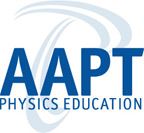- Home
- What We Do
- Laboratory Immersions
- Immersions 2018
- Imm2018RoseHulman_ACFaraday
Faraday Rotation using AC Fields and Lock-In Detection
Rose-Hulman Institute of Technology, August 2 - 4 , 2018
(One set-up available for two participants)

FR is a topic of fundamental and technological interest. A version of this effect involving ferromagnetic materials is used in optical isolators that are integral part of any photonic circuit. FR is routinely employed to investigate energy-level structures and Zeeman splitting in various materials. Another extraordinary application of the idea is to look at the FR of radio waves from different parts of the universe to estimate galactic and intergalactic magnetic fields. More recently a lot of research has focused on the FR of radio signals from ionosphere (FR due to free charges).
Participants will learn about the fundamentals of lock-in based detection and its role in noise minimization. They will learn about the details of the resonant circuit that is used to generate the magnetic fields. Finally, the participants will learn about how FR is used with different types of materials to learn about different types of information that ranges from material properties to reaction kinematics.
The experiment will be divided into two parts. The first part will deal with the theory behind the construction and assembly of the FR setup, along with the integration of lock-in detection and the role played by AC fields in facilitating such a detection scheme. The second part of the experiment will consist of taking FR measurements on standard samples like glass and water (dia- and paramagnetic). Depending on the progress made by the participants, they may be introduced to a variation in the measurement scheme like characterizing samples that create multi-harmonic response, and how one can interpret those higher signal harmonics in terms of the magnetic behavior of the samples (superparamagnetic samples).
Participants will be expected to have their computers with them and to have had some hands-on experience with data analysis. They will be instructed on proper precautions needed in a high voltage environment.
Finally, while the experiment utilizes many items that are commonly found in physics labs (lasers, detectors, function generators), two items that are vital for the experiment are a lock-in amplifier and an audio amplifier. Many refurbished lock-in amplifiers are available from vendors but even a new one can be as low as $1,250. Suitable audio amplifiers can be acquired for $150 - $200.
Host and Mentor:

Maarij Syed (B.S., 1991, University of Oklahoma; Ph.D., 1998, University of Notre Dame) is currently Assistant Professor in the Department of Physics and Optical Engineering at Rose-Hulman Institute of Technology where he has been since Fall 1998. His Ph.D. work in Prof. Dobrowolska-Furdyna's group was on the magneto-optics of small offset superlattice structures based on II-VI semiconductors. His research has included investigations of novel materials for SPR applications and the magneto-optics of superparamagnetic nanoparticles. Currently he focuses on the size determination of nanoparticles and the investigation of their relaxation dynamics as well as the investigation of silica nano-films fabricated through spin coating techniques and their humidity response. This research is carried out in collaboration with the Dept. of Chemical Engineering and is largely based on using ellipsometry to characterize the silica films in various humidity environments. He also has a continuing interest in pedagogical issues related to electromagnetism.
Maarij Syed, Assistant Professor, Rose-Hulman Institute of Technology, Department of Physics and Optical Engineering, 5500 Wabash Ave., Terre Haute, IN 47803. Email: syed@rose-hulman.edu. Telephone: 812-877-8957.






